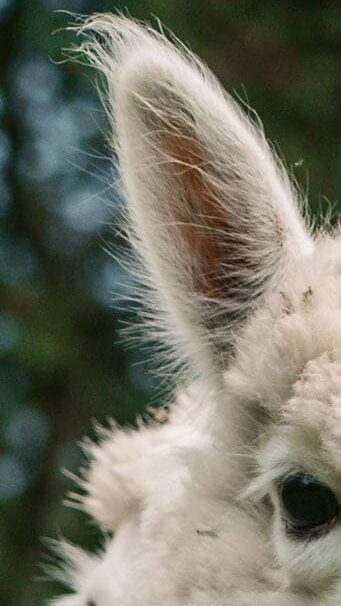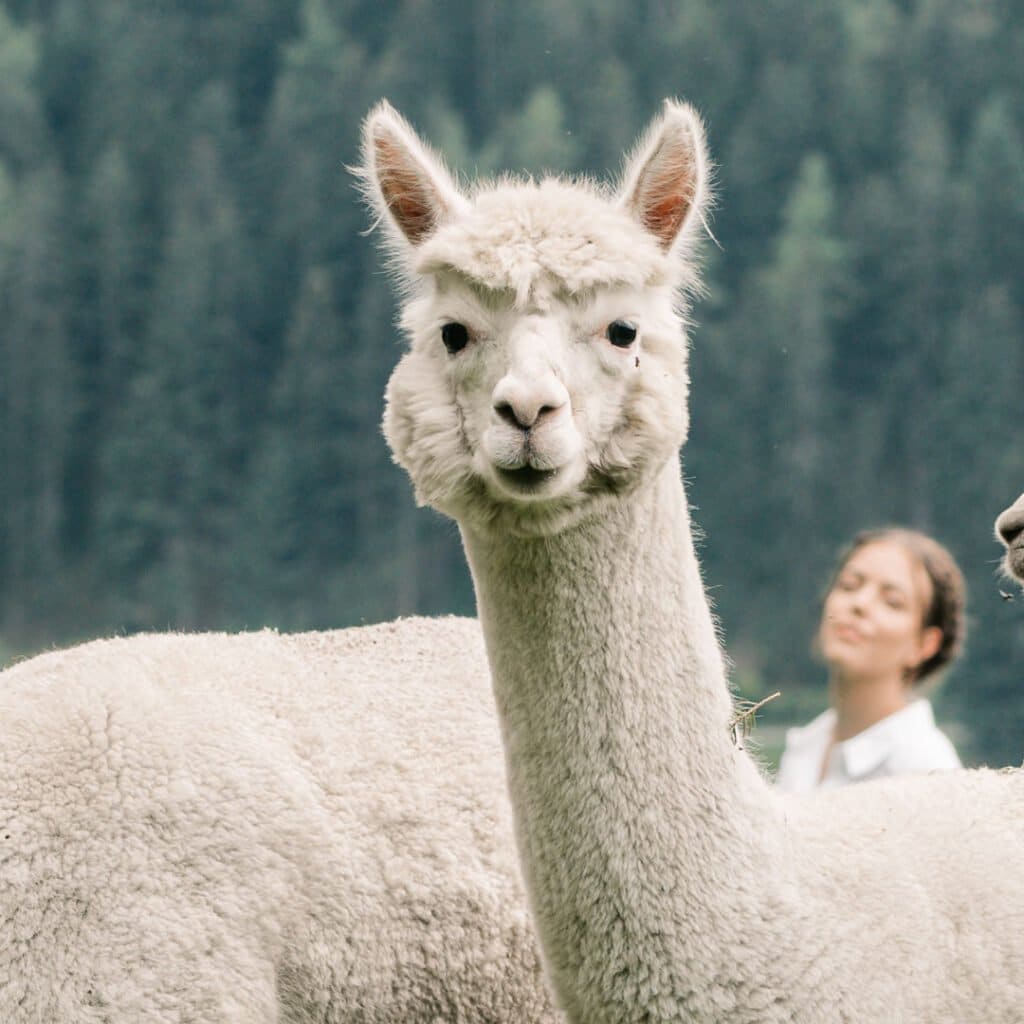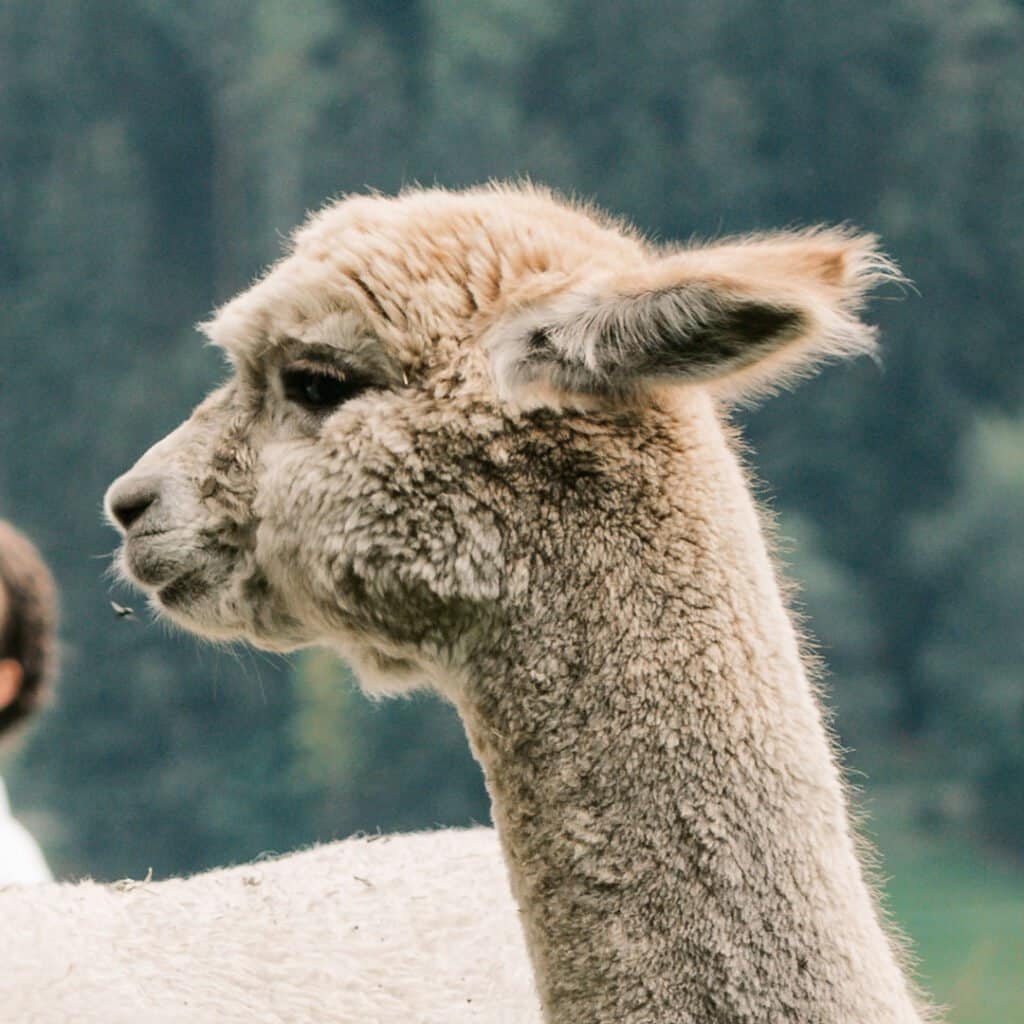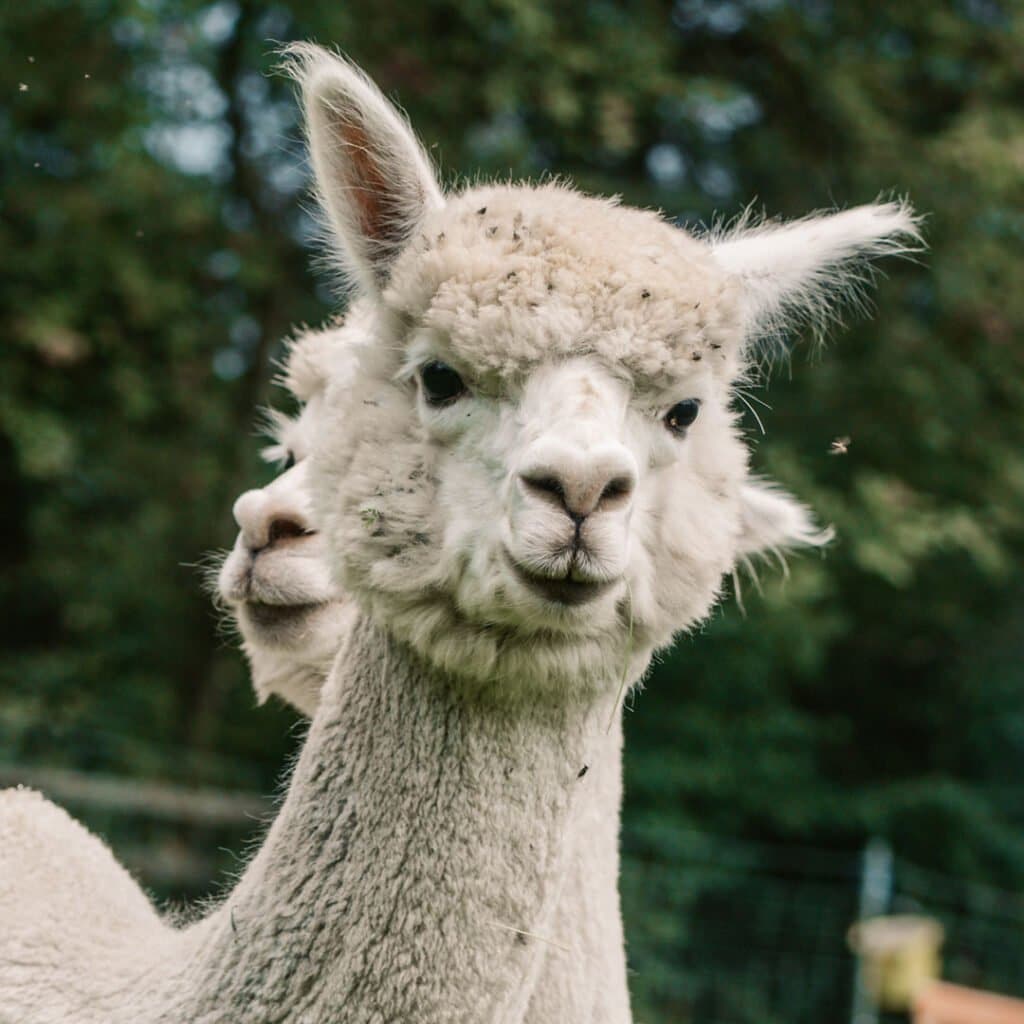
Alpacas – Gentle camels of the Andes
Alpacas are wonderful and fascinating animals that originally come from the high plateaus of the Andes in South America.
These gentle creatures belong to the camelid family and are closely related to llamas.
There are two main types of alpaca: the huacaya and the suri, with the huacaya being the most common due to its thick, fluffy coat.
Our herd currently consists of 3 broodmares who have been on permanent vacation with us since 2023.

BONNY
Gentle and friendly: Alpacas are known for their gentle and friendly nature. They are sociable animals that like to live in herds.
JULY
Useful wool: Alpaca wool is one of the softest and warmest natural fibers in the world. It is used for the production of clothing and other textiles.


NIKITA
Alpaca therapy for stress & burnout
Alpaca therapy is particularly suitable for stress and burnout syndrome, as the animals can trigger a psychological stress reduction in those affected.
Studies confirm that the breathing rate of those affected is more even and that blood pressure is lowered as a result . The good-natured, calm character has a calming and antidepressant effect on stressed people and helps them to switch off.
A little background knowledge about the alpaca
History of the alpacas
Information from the Austrian Alpaca Breeding Association. Alpacas and llamas were domesticated around 5,000 years ago. While llamas were mainly used as pack animals in South American civilizations, the alpaca was bred for its wool. Among the Incas, a cloak made of alpaca wool symbolized prosperity, while the finer wool of the vicuñas was reserved for the ruling caste. The Incas kept large herds of alpacas. However, with the conquest of Peru by the Spanish, who brought sheep with them and showed little interest in native farm animals, the alpaca was almost forgotten and became the livestock of the poor, indigenous population.
The value of the alpaca only increased after the independence of the South American states. Breeding was resumed and the wool exported worldwide.
The worldwide spread
The worldwide spread of alpacas began more than 30 years ago with commercial imports to America, Australia and Europe. There are currently over 5,000 breeders in the USA with a total of around 150,000 alpacas. Around 150,000 to 200,000 alpacas live in Australia and the number is increasing. China and Japan also currently have programs to promote alpaca breeding.
Europe has been an important center for alpaca breeding from the very beginning. Great Britain is the leader in alpaca breeding in Europe, with around 25,000 animals. The distribution extends across France, Germany, Switzerland, Austria, Finland, Sweden, Norway, the Benelux countries, Italy, Spain, Poland and the Baltic states. The total population in the EU is currently around 50,000 – 60,000 animals (including Great Britain), with around 3,000 to 4,000 alpacas living in Austria.
Alpacas and tourism
Alpacas are extremely quiet. They use gentle humming to communicate. As their fibers do not contain any fat, they are odorless and do not require extensive coat care. In addition to the valuable fur and the great appearance, the
alpaca therapy
is a significant added value for our guests.
But it is not only these characteristics that make alpacas attractive for tourism.
It is their unique charisma that makes them irresistible.
And the children love them anyway!
